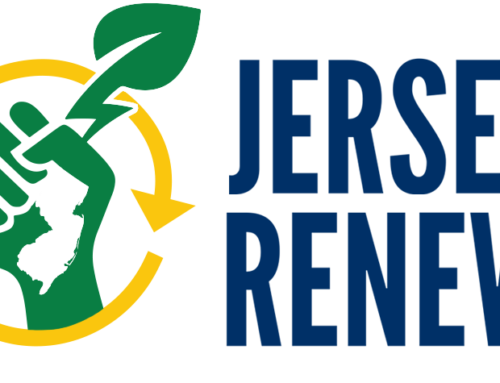Originally published on NJ.com: https://www.nj.com/opinion/2021/01/nj-steelworkers-and-windmills-perfect-together-opinion.html

Del Vitale, the director United Steelworkers-District 4, and Debra Coyle McFadden, executive director for the New Jersey Work Environment Council, say United Steelworkers, who helped build New York City skyscrapers, have earned the right to deliver the same quality product to the builders of wind turbines.
By Del Vitale and Debra Coyle McFadden
Victor Teran and his colleagues at Banker Steel in South Plainfield go to work every day proud that their skill and dedication keep some of New York City’s biggest buildings sturdy and safe.
Skyscraper developers buy steel fabricated by Teran and about 200 other members of United Steelworkers Local 8288-67 because they understand their need for top-quality material meticulously produced by highly trained workers nearby.
And Teran knows that America’s unionized manufacturing workforce earned the right to deliver the same supply-chain reliability to the builders of other mammoth structures — wind turbines — as they develop a string of new wind farms to generate power along the East Coast.
Ørsted — a developer of offshore wind power that already operates energy generation facilities in Rhode Island and constructed pilot sites in Virginia, among other projects — recently reached an agreement with North America’s Building Trades Unions (NABTU) to train a generation of construction workers for the company’s ambitious expansion.
In addition, New Jersey Gov. Phil Murphy just announced that Ørsted and German manufacturer EEW will partner on a $250 million factory at Paulsboro Marine Terminal to make steel platforms for offshore wind turbines in the Northeast and across the United States. To learn more about the latest developments in New Jersey’s offshore wind efforts, check out Jersey Renews’ Time for Turbines virtual conference on January 26 and 27.
The two announcements go hand in hand. Because, while Ørsted will surely reap huge benefits from its alliance with the NABTU’s skilled craft professionals, the company’s success ultimately hinges on much more: A dependable supply of the superior steel, fiberglass, aluminum and other essential components that only America’s union manufacturing workers can provide.
Making the platforms in the U.S. is a laudable step. But fully leveraging the benefits of this growing industry, and other emerging energy sources will mean using American workers’ cleanly- and efficiently-made products across the entire supply chain.
Ørsted’s projects have the potential to create thousands of family-sustaining manufacturing jobs, boosting the U.S. economy for years to come even as the company benefits from the unparalleled craftsmanship and ironclad work ethic that workers like Teran bring to their jobs.
“You know what you’re getting,” explained Teran, who has worked at Banker Steel for two and a half years and helped supply materials for New York City skyscrapers like 66 Hudson and One Vanderbilt. Often, he said, customers tour the plant to get a firsthand look at the care and expertise he and his co-workers put into every weld. They take their role seriously because entire buildings — and countless lives — can rest on the materials they make.
We know that we have to build parts that are going to be supporting hundreds of thousands of people every day,” Teran said. “They have to be very good quality.”
When developers try to cut corners with the purchase of cheap, foreign-made materials, they end up paying a much higher price and put lives at risk.
Officials in California, for example, used low-quality foreign steel, produced by low-wage workers, during the reconstruction of part of the San Francisco-Oakland Bay Bridge. The defective materials raised numerous safety concerns, including the span’s viability during earthquakes, and contributed to massive cost overruns. The first problems surfaced even before the bridge’s re-opening.
Ørsted’s plans to expand America’s wind power industry dovetail with President-elect Joe Biden’s Build Back Better campaign to stimulate the economy, enhance national security and overhaul the country’s crumbling infrastructure — including energy facilities — with ramped-up reliance on U.S.-made products and organized labor.
Wind energy remains a nascent industry in the U.S., and Ørsted — with rights to construct offshore facilities in Connecticut, Maryland, New Jersey, New York and Rhode Island — hopes to begin commissioning new wind farms by 2024.
Millions of manufacturing workers in United Steelworkers and other unions across the country anticipate a major role in this vitally important effort. They will give all they have and take pride in a job well done, just as Teran and his co-workers relish their contributions to New York City’s skyline. “Knowing that I am part of it gives me satisfaction every day,” Teran said.
Del Vitale is director of District 4 for the United Steelworkers. Debra Coyle McFadden is the executive director for the New Jersey Work Environment Council. Both organizations are partners in the Jersey Renews coalition.

